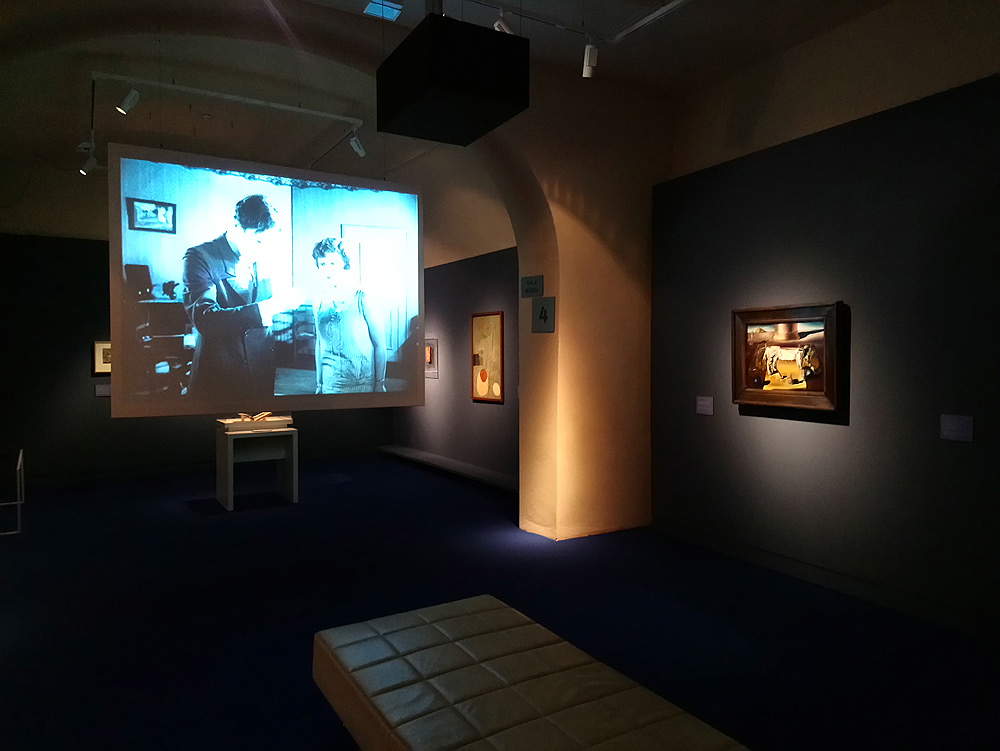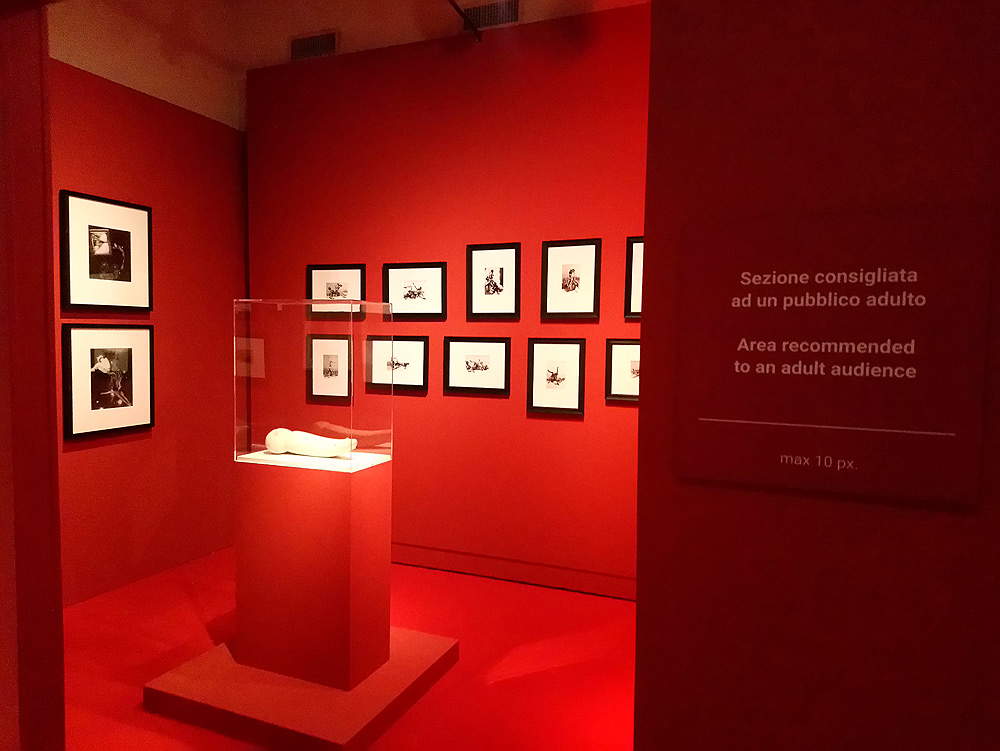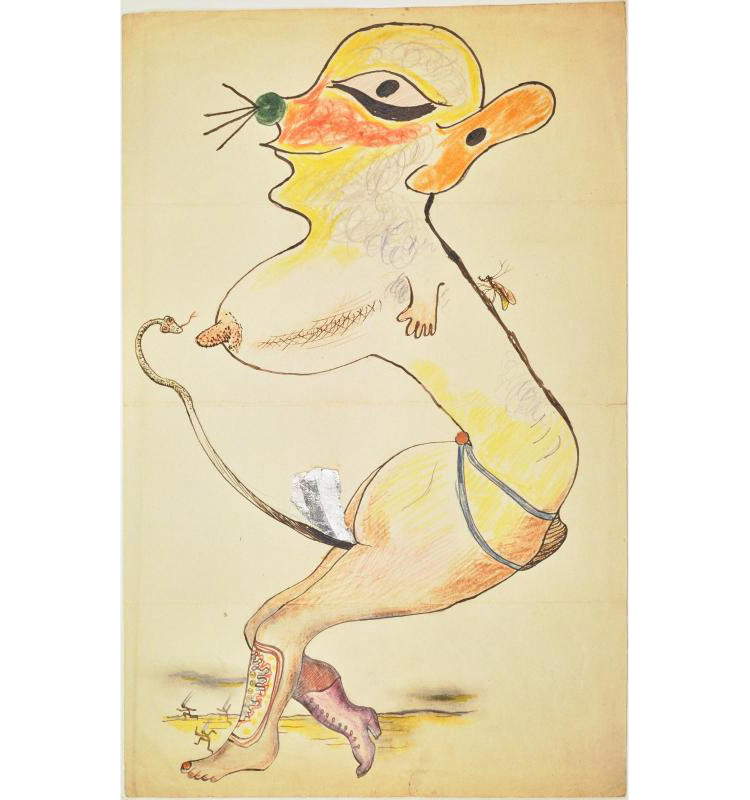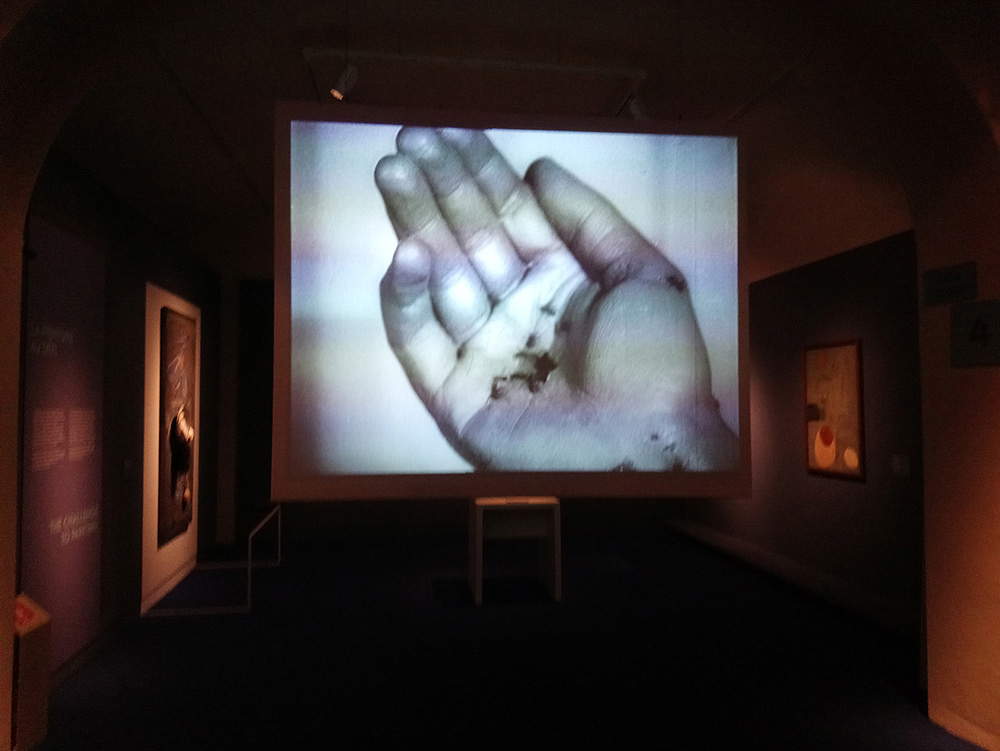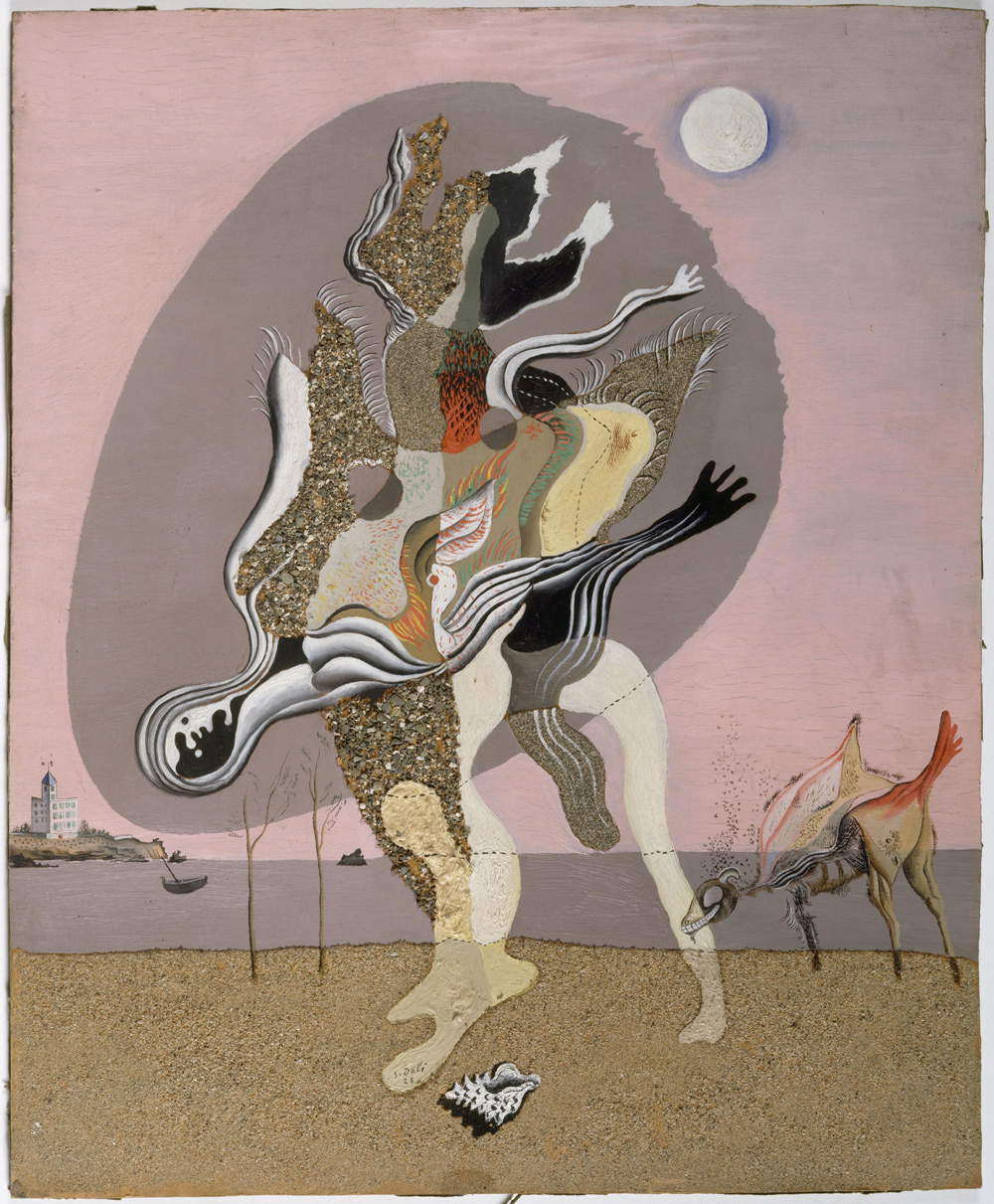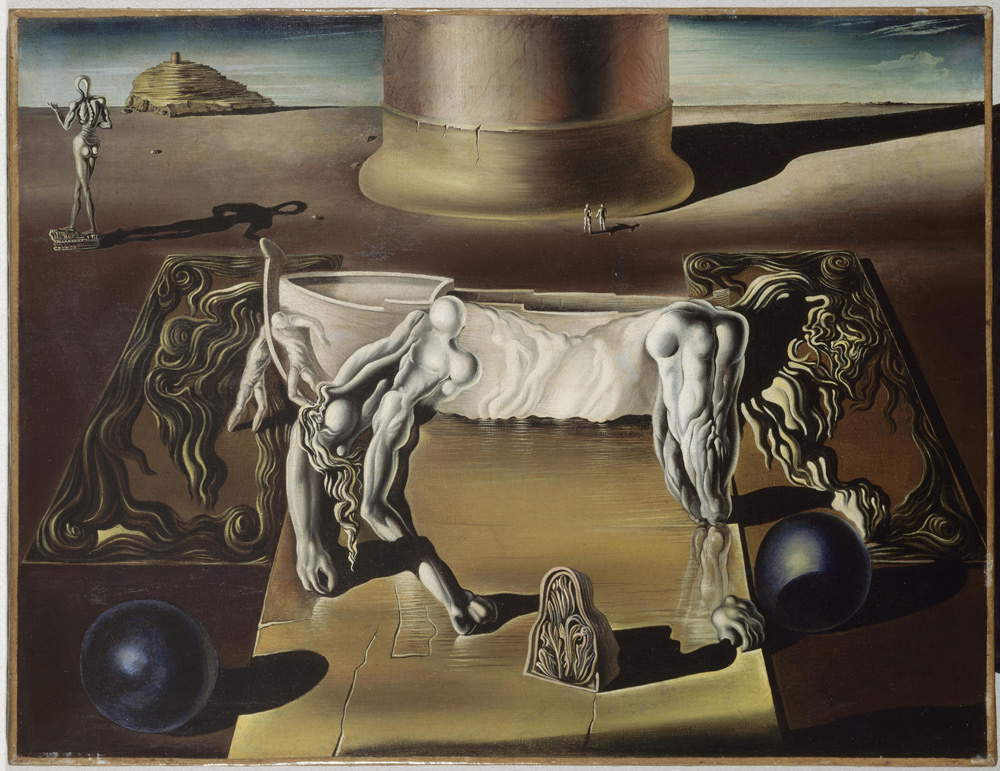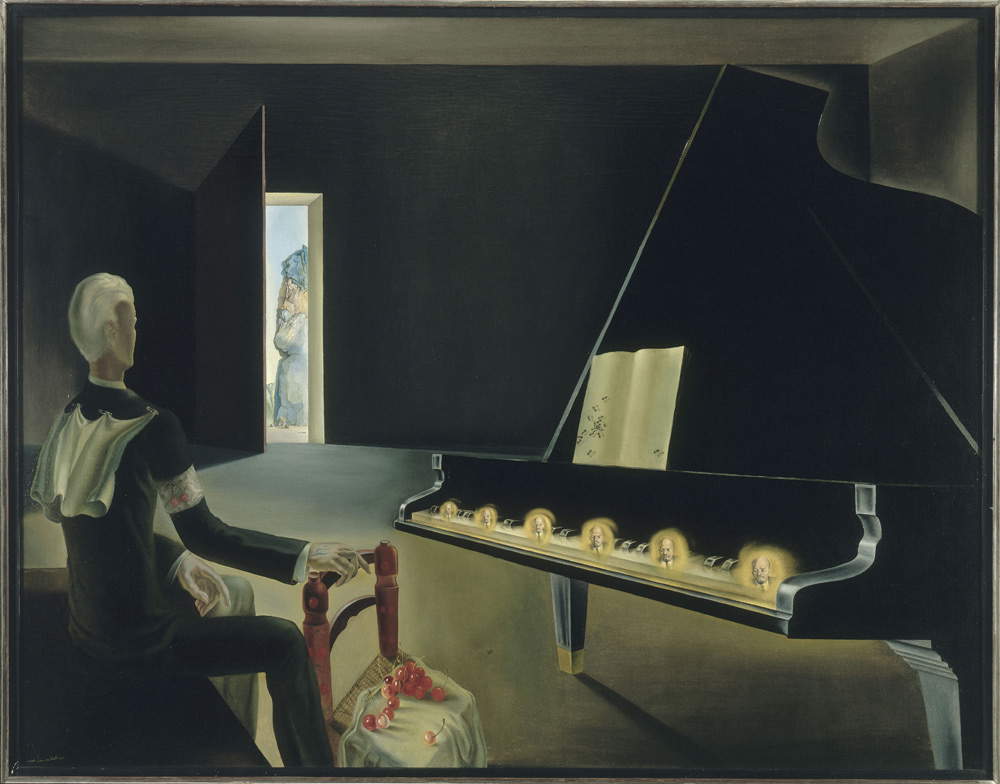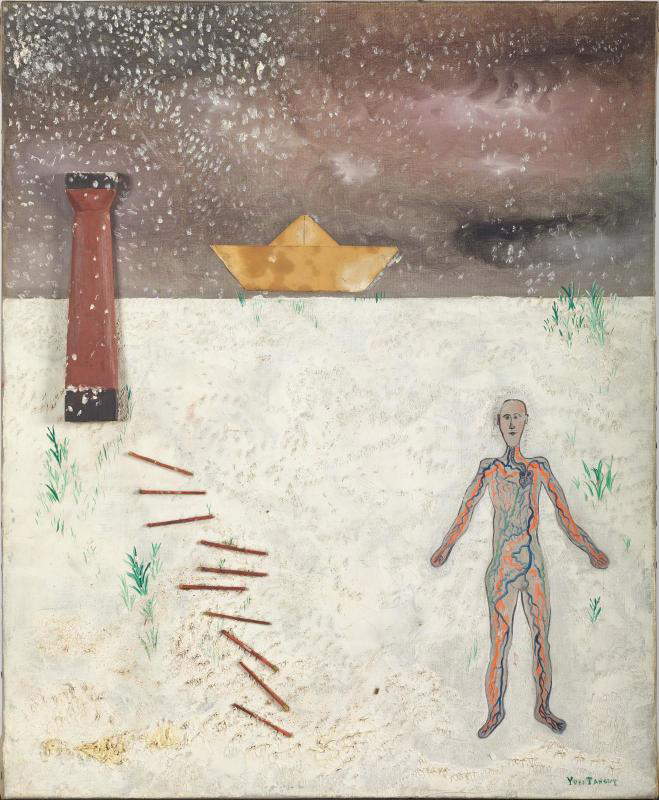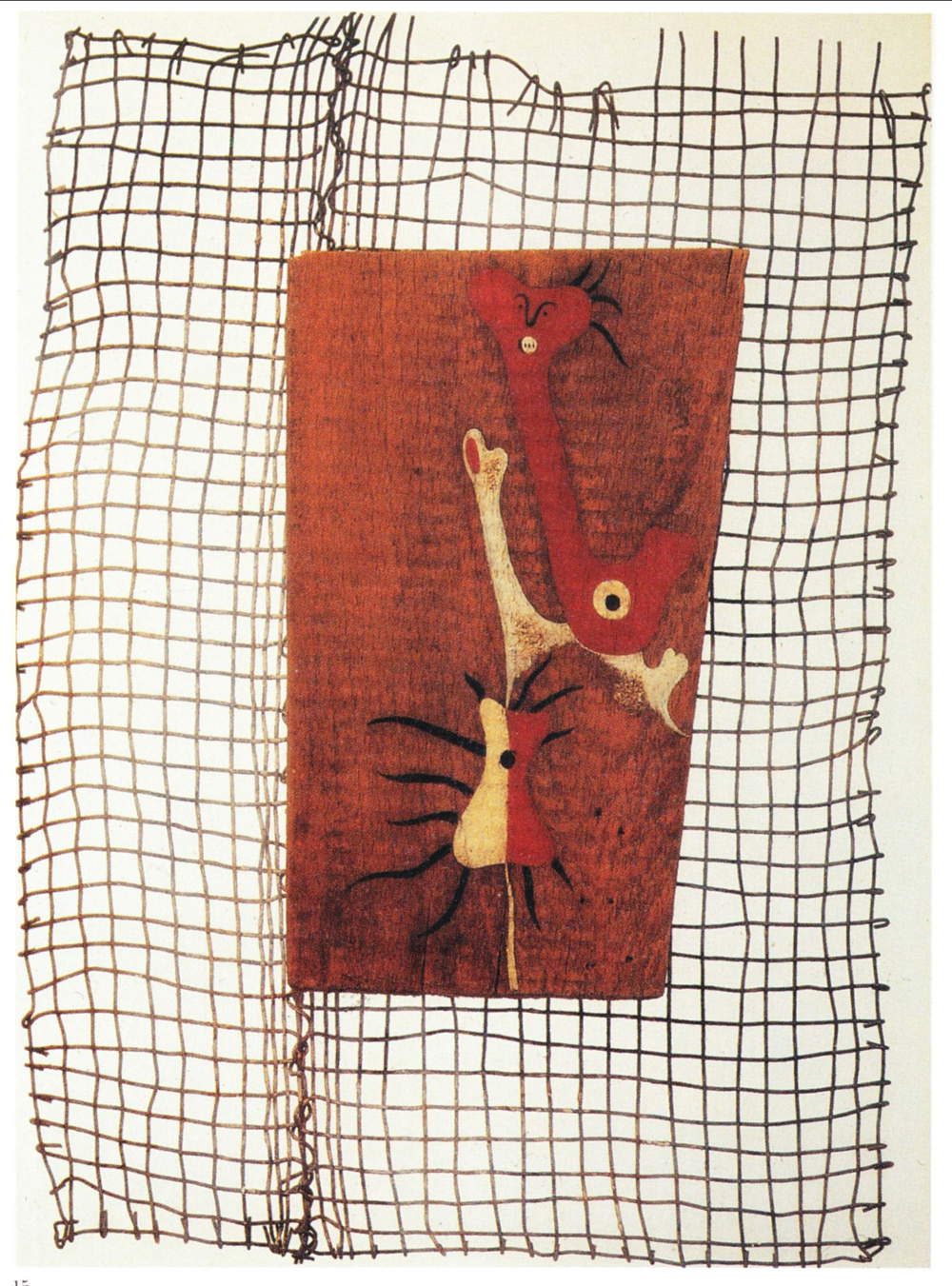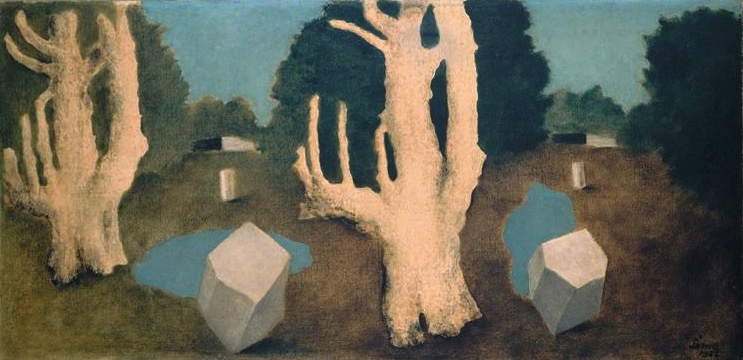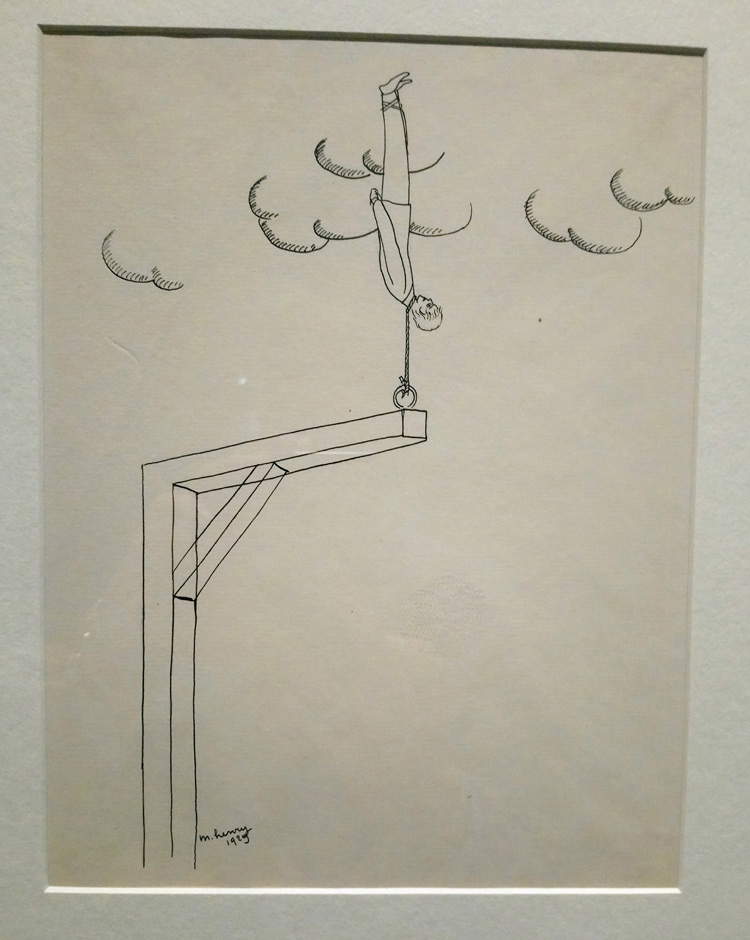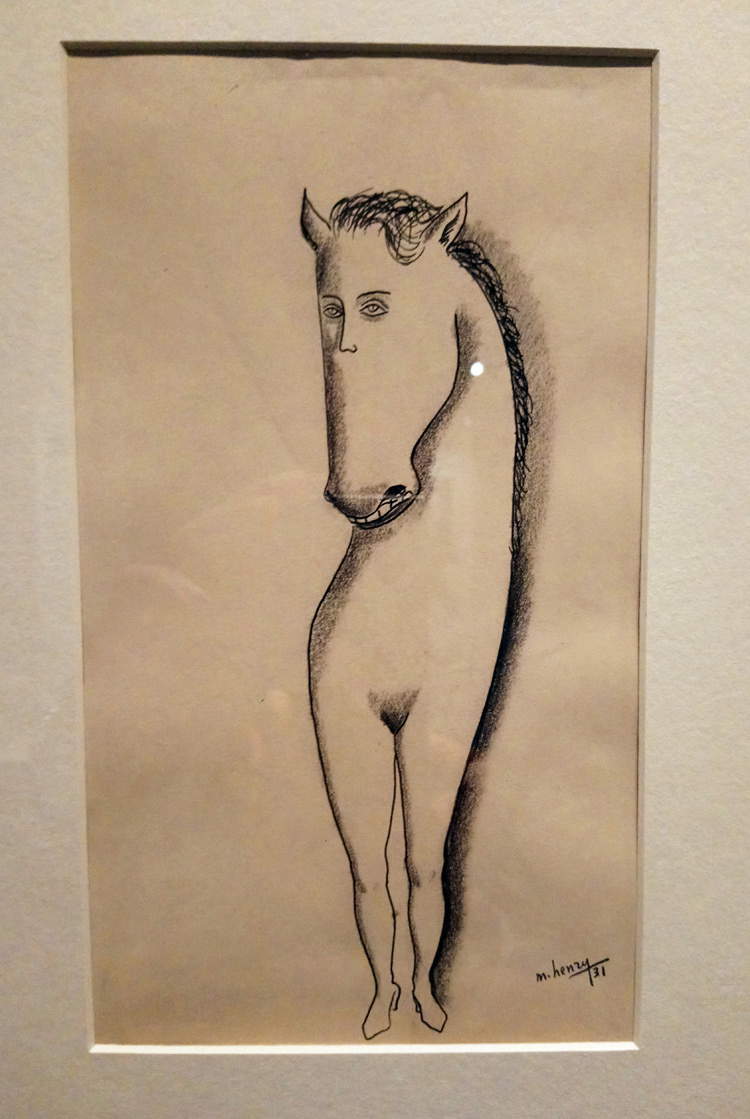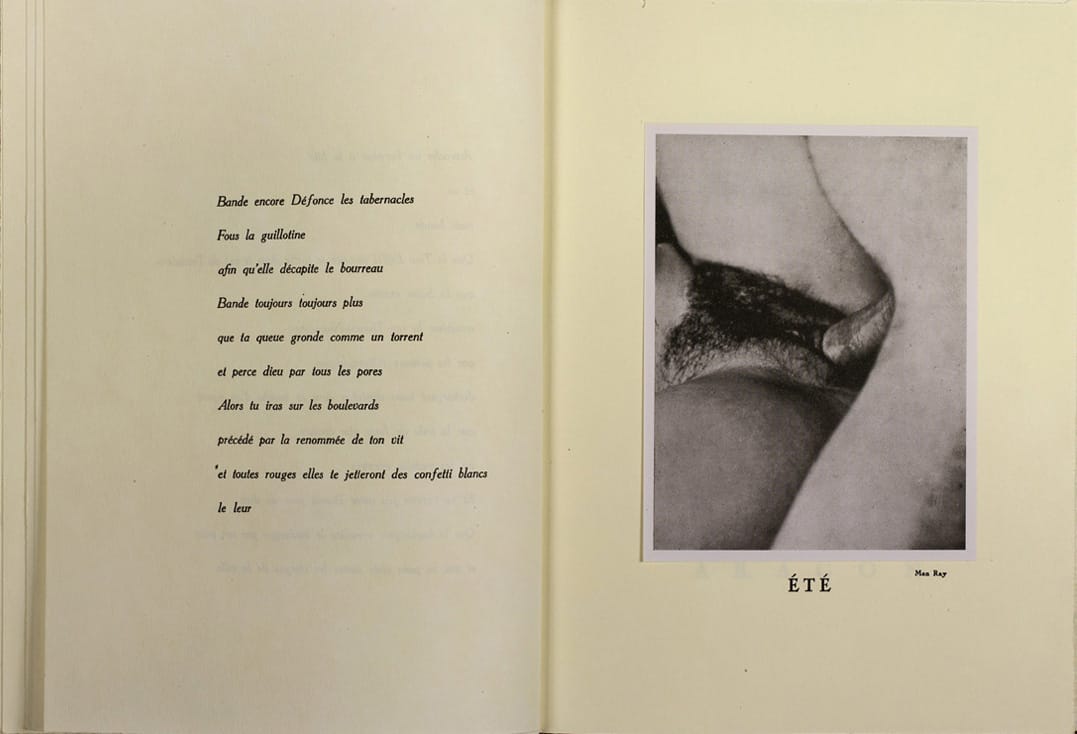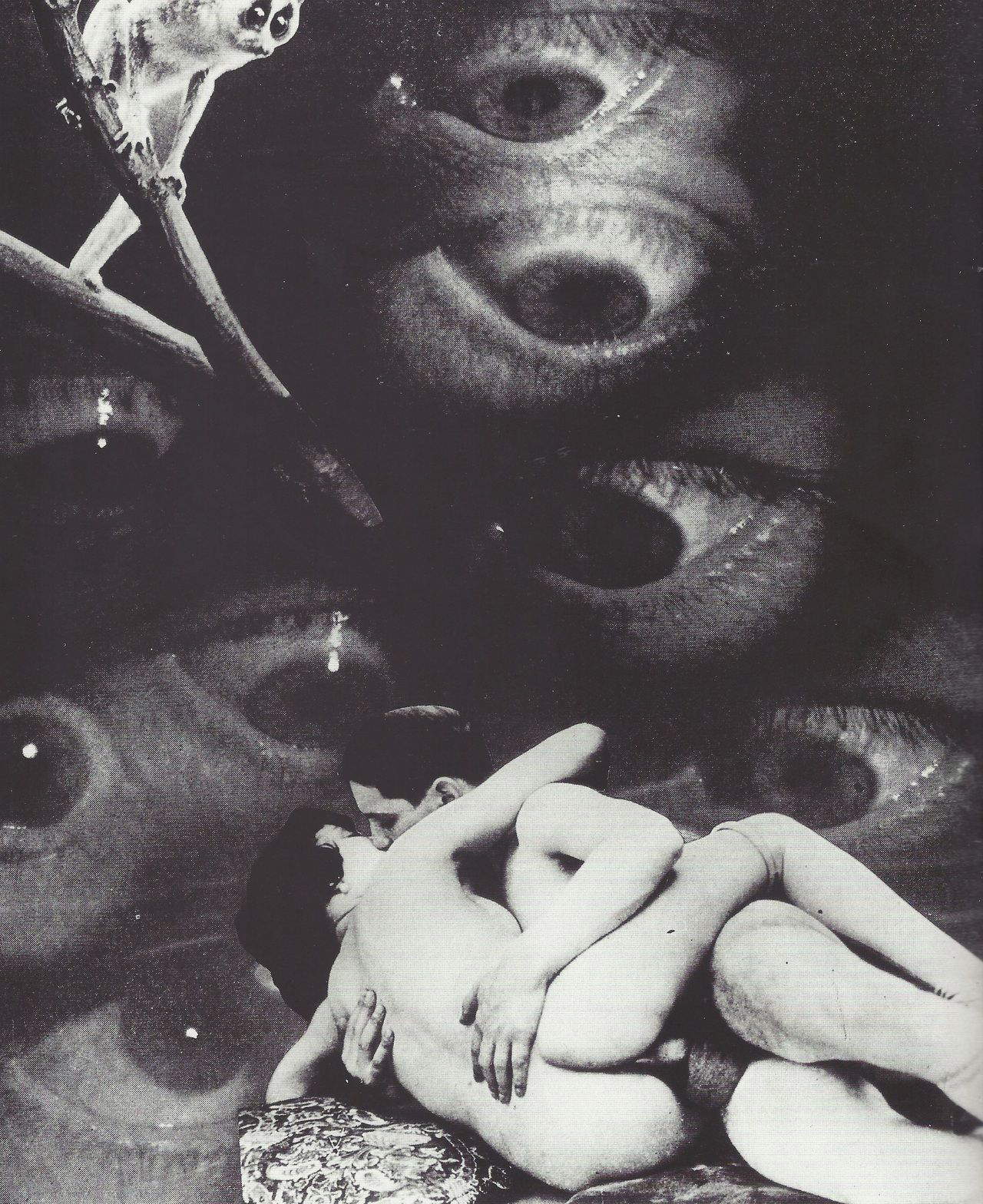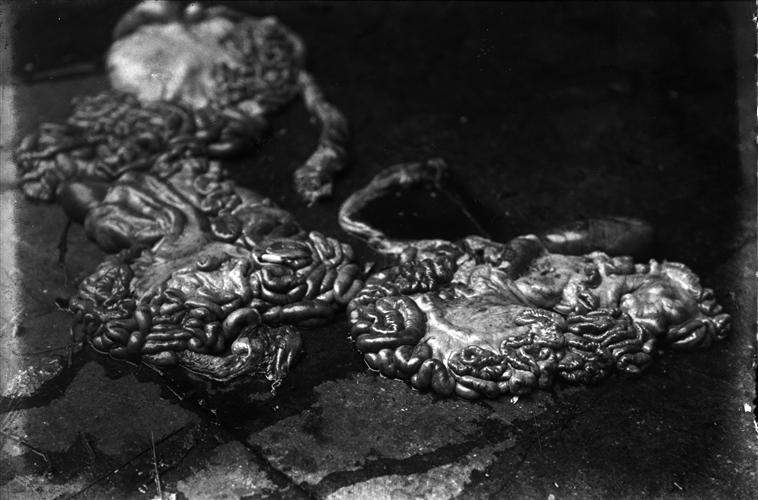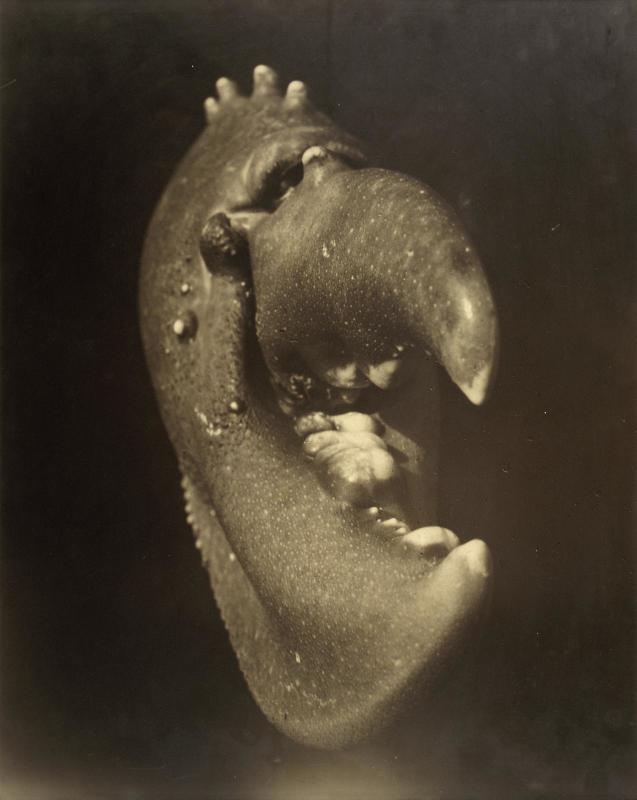by Federico Giannini (Instagram: @federicogiannini1), published on 28/11/2018
Categories: Exhibition reviews
/ Disclaimer
Review of the exhibition '1929: Great Surrealism from the Centre Pompidou. From Magritte to Duchamp' in Pisa, Palazzo Blu, from October 11, 2018 to February 17, 2019.
The year 1929 has gone down in art history as a decisive year for the fate of Surrealism as a whole. That year, the movement founded in 1924 by André Breton (Tinchebray, 1896 - Paris, 1966) confronted crucial events that would mark its history indelibly: it is possible to say that one of the turning points occurred in mid-February, when Breton and Louis Aragon (Paris, 1897 - 1982) sent a letter to several exponents of the Surrealist movement (or, in some way, linked to Surrealism) in order to ascertain what their ideological position was in view of possible collective actions that the group would undertake shortly thereafter. Those were the prodromes of the internal split within the group that would occur in the following weeks. The poet and art critic, who had been a member of the French Communist Party since 1926, hoped that the entire group would make a political commitment in the direction of the ideals that Breton himself had embraced: many of the Surrealist artists manifested a profound disagreement with Breton’s intentions, and broke away from the group, giving rise to new experiences. But the history of Surrealism knew, in the same year, many other topical moments: in the spring Salvador Dalí (Figueres, 1904 - 1989) arrived in Paris and was introduced to the movement by Joan Miró (Barcelona, 1893 - Palma de Mallorca, 1983), and having arrived in the French capital he in turn managed to ensure a fundamental contribution to Surrealism from his beginnings, when he made himself known by participating in the making of Luís Buñuel’s celebrated film Un chien andalou (Calanda, 1900 - Mexico City, 1983). Again, in April, one of the dissidents, Georges Bataille (Billom, 1897 - Paris, 1962), published the first issue of Documents magazine, and a month later Max Ernst ’s (Brühl, 1891 - Paris, 1976) novel-collage La femme 100 têtes was given to the presses, while in June the first exhibition of the Le Grand Jeu group was held. Toward the end of the year, a quarrel between Breton and René Magritte (Lessines, 1898 - Brussels, 1967) convinced the Belgian painter to return to his native country, and on December 15 the last issue of La Révolution surréaliste was published.
The events briefly summarized in the opening (along with others discussed below) are the subject of an exhibition in Pisa, at Palazzo Blu, entitled 1929: Great Surrealism from the Centre Pompidou. From Magritte to Duchamp and which, making use of a group of masterpieces arriving (en bloc) from the Centre Pompidou in Paris, intends to take stock of that very important year for surrealism and, consequently, for the history of twentieth-century art. So, the idea of the exhibition curated by Didier Ottinger, deputy director of the Musée National d’art moderne, cannot but look good, and although an extensive bibliography has been produced on the subject of “surrealism in 1929,” an exhibition capable of summarizing studies and research in a good popularizing project for the general public, capable of overcoming the usual blockbuster exhibition optics into which reviews dedicated to Dalí and his companions often fall, from its announcement could not but be greeted positively. It is a pity, however, that the Pisan exhibition only partially succeeds in hitting its goals and fails to pose as a truly incisive exhibition capable of concretizing its intentions: and the shortcomings are evident right from the title, since the “Magritte” and “Duchamp” that were included in the title have the sole purpose of presenting two names that are strange to the public, since neither are they the main protagonists of the exhibition, nor can they be taken as points of reference to trace a trajectory within the year 1929. Paradoxically, it would have made more sense to include Dalí’s name in the title, perhaps avoided so as not to give the impression of having succumbed too much to commercial logic, given the Catalan artist’s media overexposure, but certainly appropriate to give the idea of how pregnant his contribution was offered to the movement in 1929.
 |
| A room in the exhibition 1929: Great Surrealism from the Centre Pompidou. From Magritte to Duchamp |
 |
| A room from the exhibition 1929: Great Surrealism from the Centre Pompidou. From Magritte to Duchamp |
 |
| A room from the exhibition 1929: the great surrealism from the Centre Pompidou. From Magritte to Duchamp" /> |
Still, the exhibition gets off to a good start (though certainly without particularly original contributions), offering a brief historical overview of the movement for the benefit of an audience that might be unfamiliar with the history of Surrealism. The visitor first finds the definition of Surrealism as formulated by Breton in the 1924 manifesto (a “pure psychic automatism by which one proposes to express, whether verbally or in any other way, the actual functioning of thought, in the absence of any control exercised by reason, beyond any aesthetic or moral concern”), and to better explicate the concept a small group of Cadavre exquis born from the play of some Surrealists is displayed on the aisle that effectively constitutes the introduction to the exhibition: as is well known, the “exquisite corpse” was a pastime involving the creation of a story by a group of players, each of whom could only know the last word written before his or her turn (and the same happened with pictures: the aim was to create a drawing, and each player had the sheet covered, leaving visible only the last portion executed before his or her turn). This was a practice to which the Surrealists resorted in order to demonstrate that “real functioning of thought,” activated by theunconscious and without the limits imposed by reason, which the members of the movement intended to bring out, using the free and random association of elements as the key to revealing the mechanisms generated by the psyche. An introductory function is also reserved for the next room, which intends to present visitors with some works by the precursors of Surrealism, on all the artists of the Dada movement, founded in Zurich in 1916: with the Dadaists, the Surrealists would share the tendency to collective action and group participation, as well as subversive aims, while they would be divided by the way of conceiving artistic action (which for the Dadaists had a destructive character, while for the Surrealists action was always constructive). The presence of a key work of the Dada movement such as is L.H.O.O.Q. by Marcel Duchamp (Blainville-Crevon, 1887 Neuilly-sur-Seine, 1968) marks a profound difference between Dada and Surrealism: if the former was mockery and total rejection, the latter continued to look to tradition. It is interesting to recall how in the 1950s one of the leading artists of the Surrealist movement, Yves Tanguy (Paris, 1900 - Woodbury, 1955), while enumerating his favorite artists, would mention some names of distinguished Renaissance painters (Cranach, Bosch, Paolo Uccello), as well as that of a contemporary, Giorgio De Chirico (Volos, 1888 - Rome, 1978), observed with interest by Breton and comrades since the associations between unexpected objects in his works were in some ways in keeping with the aesthetics and thought of Surrealism (“in his youth,” Breton declared in 1928, “De Chirico completed what for us was the most extraordinary journey ever undertaken.” namely, the journey into the domain of the dream and the unconscious). Towards the Greek-born painter, however, the attitude was ambivalent, since works such as the Lutte antique exhibited in the show (and which was part of the works on the theme of gladiators) were openly despised, and soon the relations between De Chirico and the Surrealists deteriorated in an irremediable way (the Italian artist, in his autobiography, would describe them as “group of degenerates, of hooligans, of daddy’s boys, of idlers, of onanists and abulics who pompously called themselves ’surrealists’ and even spoke of ’surrealist revolution’ and ’surrealist movement’”).
Without being offered an itinerary that delves further into the developments of the movement, the audience is immediately catapulted into medias res with Salvador Dalí’s arrival in Paris in 1929: The images of Un chien andalou, a film born “from the meeting of two dreams,” as Buñuel would write in his autobiography, and which, with its aggressive charge, and “supported by a dreamlike logic,” writes Philippe-Alain Michaud in the catalog essay devoted precisely to the film, “aimed to strike or disquiet the spectator c on bizarre or shocking images rather than to seduce him.” Dalí took part in the writing of the film (his is, for example, the image of the hand full of ants) and together with Buñuel elaborated a product that, despite its transgressive violence, continued to make use of a conventional structure, perhaps because, Michaud hypothesizes, the intention of the two Spanish artists was to reject conceptual experiments in order to address directly and exclusively, as Buñuel himself would later claim, the sensibility of the public. Dalí was immediately appreciated by the Surrealists active in Paris, who praised the character of absolute novelty of his art, his ability to open himself totally to dreamlike images, and the power of his verve. The Pisan exhibition showcases several works central to contextualizing Dalí’s fascination with his colleagues: a work such as L’�?ne pourri (“The Putrefied Donkey”) relates directly to Un chien andalou, where the image of decaying donkey carcasses appears (“putrefaction,” curator Ottinger wrote in 2006, “becomes the privileged instrument of a relentless critique of idealism”), while Dormeuse, cheval, lion invisibles is a composition that reveals the basis of Dalí’s method, which he himself, in an article published in the journal Le Surréalisme au service de la révolution (and titled precisely L’�?ne pourri), would describe as “a spontaneous method of irrational knowledge based on the interpretative-critical association of delusional phenomena,” and finally Hallucination partielle. Six imagenes de Lénine sur un piano is a dream with which the Figueres-based artist ironically flogs the relationship between Surrealism and politics, which moreover involved him directly in the aftermath of the outrage that French communists expressed following the release of Dalí’s Rêverie article in Le Surréalisme au service de la révolution.
One of the most interesting sections of the Palazzo Blu exhibition is the one bearing the title La peinture au défi, from the essay of the same name that Louis Aragon dedicated to the theme of collage in 1929. Challenging “the metaphysical status of painting, a medium by its very nature certainly not eternal” (so William Jeffett), collage, invented in the Cubist sphere (some works by Picasso are present in the exhibition, although we are talking about oils on canvas), became for the Surrealists a further means of exploring the unconscious. It was Aragon himself who clarified the reasons for the use of collage, and established the differences between Cubist collage, Dadaist collage, and Surrealist collage. This technique, according to Aragon, confronted the artist with the problem of the entry of the real into art, but at the same time, as a means of creating a new reality, it also establishes a rupture vis-à-vis reality, as well as the entry of the dimension of the marvelous into the work of art: marvelous which, for Aragon, “is the contradiction that appears in the real.” And it is on this basis that the difference between Cubist collage and Surrealist collage is substantiated: “for the Cubists,” he wrote, "the postmark, the newspaper, the box of matches that the painter pastes on the board, have the value of a test, of an instrument of control of the very reality of the board. The glued object expresses a connection to the real world, and the Cubist collage is itself real presence and representation. Surrealist collage, to the concept of presence, opposes that of transformation: in the work of an artist such as Ernst (for whom Aragon spoke of "poleticcollage ") the clash of real elements pertaining to different spheres and assembled in a single space is capable of creating a new reality. Max Ernst is present in the exhibition, as well as with some plates from La femme 100 têtes, the novel-collage that intended to revise the very concept of the novel, with a work such as Loplop présente une jeune fille, where the artist’s alter ego (“Loplop,” a kind of bird-like monster that recurs in several of his works) shows a cameo (the girl) to question the imitative intentions of painting. And if Tanguy’s Le phare transports us into a dreamlike dimension, Miró’s innovative Peinture-objet from 1931 exemplifies one of the Surrealist group’s new interests, that of painting as object, which would have echoes decades later.
 |
| Joan Miró, Max Morise, Man Ray, Yves Tanguy, Cadavre exquis (1927; ink, graphite, colored pencil, and collage of a fragment of silver paper on paper, 36 x 23 cm; Paris, Centre Pompidou, Musée National d’art moderne) |
 |
| Greta Knutson, Tristan Tzara, Valentine Hugo, Cadavre exquis (1929; colored pencil on paper, 32.7 x 25 cm; Paris, Centre Pompidou, Musée National d’art moderne) |
 |
| Marcel Duchamp, L.H.O.O.Q. (1930; graphite on photographic support, 61.5 x 49.5 cm; image 48 x 33 cm; Paris, Centre Pompidou, Musée National d’art moderne) |
 |
| Giorgio De Chirico, Lutte antique (oil on canvas, 73 x 100 cm; image 48 x 33 cm; Paris, Centre Pompidou, Musée National d’art moderne) |
 |
| The screening of Un chien andalou at the Palazzo Blu exhibition |
 |
| Salvador Dalí, Lâne pourri (1928; oil, sand and gravel on panel, 61 x 50 cm; Paris, Centre Pompidou, Musée National d’art moderne) |
 |
| Salvador Dalí, Dormeuse, cheval, lion invisibles (1930; oil on canvas, 50.2 x 65.2 cm; Paris, Centre Pompidou, Musée National d’art moderne) |
 |
| Salvador Dalí, Hallucination partielle. Six images de Lénine sur un piano (1931; oil and paint on canvas, 114 x 146 cm; Paris, Centre Pompidou, Musée National d’art moderne) |
 |
| Max Ernst, Loplop présente une jeune fille (1930/1966; oil on wood, plaster and objects, 194.5 x 89 x 10 cm; Paris, Centre Pompidou, Musée National d’art moderne) |
 |
| Yves Tanguy, Le phare (1926; oil on canvas with matchstick collage, wood, and paper boat, 61 x 50 cm; Paris, Centre Pompidou, Musée National d’art moderne) |
 |
|
|
The rhapsodic pace of the exhibition leads the audience to a room devoted to the story of the Grand Jeu, a singular group formed in Reims in the early 1920s on the initiative of a few high school students (René Daumal, Roger Gilbert-Lecomte, Robert Meyrat and Roger Vailland), all poets or writers intent on empirically exploring the innermost meanderings of the unconscious: “rebellious angels,” writes David Liot in his catalog essay, “preach the innocence of childhood and call themselves ’simplistes,’ experience the ’unruliness of the senses’ and the extreme states of existence (sleep deprivation, somnambulism, drugs, alcohol, etc.), not hesitating to play Russian roulette or to walk for hours blindfolded to get the feeling of being on the border between two worlds.” Their rejection of reality had its origin in the upheavals caused by World War I and, through community of purpose, would soon bring them closer to the group of Surrealists: in the meantime, the Grand Jeu would be enriched by some exponents who would embody its artistic soul, such as Maurice Henry (Cambrai, 1907 - Milan, 1984) and Josef Šíma (Jaromêř, 1891 - Paris, 1971). Šíma, in particular, introduced the four young men of Rheims to painting, and with his paintings he took care to give substance to the almost mystical visions of his fellow adventurers: in the exhibition we find one of his Double Paysage, tempête électrique where we observe the same landscape, which appears to the eyes of the relative blurred as in a dream, reproduced twice. A painting that refers to an event that marked Šíma’s imagination (the vision of lightning during a stormy night), his Double Landscape transfigures a real scene into a metaphysical dimension that the painter, who like his friends in Le Grand Jeu is in search of an “experimental metaphysics,” can access after a firsthand experience. More consonant with the ideals of Breton’s group is the art of the histrionic Henry, whose sarcastic surreal drawings (such as Le suicide est-il une solution? or �? Longchamp) is, of the exponents of the Grand Jeu, the one who comes closest to the Surrealists, and he will be one of the few to maintain contact with Breton after the meeting of the Surrealists in March 1929, during which the expulsion of the members of the “great game” would be decreed (officially, because of an editorial by Vailland considered close to reactionary positions, in reality because the ideas of the two movements turned out to be irreconcilable).
With a leap from Paris to Brussels, the exhibition introduces the figure of René Magritte: 1929 is the year in which the Belgian painter asserted himself by appearing in the magazine of Varietés, the monthly magazine founded the year before by Paul-Gustave van Hecke (Gent, 1887 - Elsene, 1967) and somewhat close to Breton’s positions, despite van Hecke’s open hostility to the French writer (he considered him a “dictator,” but this did not prevent him from having Breton edit the June 1929 issue, a special one devoted precisely to Surrealism). Magritte’s flair stands out for his original interpretation of surrealism, aimed at establishing connections between images and words: in one of his articles, juxtaposedly titled Les mots et les images (published in La révolution surrealiste, also in 1929), the artist himself would explicate his ideas with a text accompanied by explanatory images, similar to those found in children’s books (“an object , he wrote in the margin of an image of a leaf beside which the words ”le canon“ had been affixed, ”does not care so much for its name that another, more suitable name cannot be found for it,“ or that ”an object makes us suppose that there are others behind it,“ and again that ”an object never performs the same task that its name or its image cover"). These relationships (which anticipate conceptual art and the researches of a master like Joseph Kosuth by several years) are further explored in painting practice: the exhibition exhibits the 1928 Querelle des Universaux, an enigmatic painting that echoes in its title the quaestio de universalibus (the dispute over universals in medieval scholasticism, which was precisely about the relationship between objects and language, and ours to fully express reality with the terms of the word), and where a five-pointed gray star divides four words (“canon,” “feuillage,” “miroir,” “cheval”) that replace the elements they represent, and concur to compose an alienating landscape that stimulates the viewer’s ability to connect the term to its object of reference. Another painting typical of Magritte’s poetics is Le Double Secret, a portrait of a man who takes off his outer mask and reveals an empty interior, thus spurring us to question our perception of reality.
 |
| Josef Šíma, Double Paysage, tempête électrique (1928; oil on canvas, 67 x 137 cm; Paris, Centre Pompidou, Musée National d’art moderne) |
 |
| Maurice Henry, Le Suicide est-il une solution? (1929; Indian ink on paper, 26.9 x 21.1 cm; Paris, Centre Pompidou, Musée National d’art moderne) |
 |
| Maurice Henry, �? Longchamp (1931; graphite and India ink on paper, 23.4 x 13.8 cm; Paris, Centre Pompidou, Musée National d’art moderne) |
 |
| René Magritte, Querelle des Universaux (1928; oil on canvas, 53.5 x 72.5 cm; Paris, Centre Pompidou, Musée National d’art moderne) |
 |
| René Magritte, Le double secret (1927; oil on canvas, 114 x 162 cm; Paris, Centre Pompidou, Musée National d’art moderne) " /> |
One goes up to the upper floor, and the exhibition itinerary, which already appeared quite unglued in the first seven rooms, would seem to lose further cohesion with a room, the eighth, titled The Faces of Surrealism, whose ends remain quite obscure (there is talk, in a generic way, of a “diffusion” of the Surrealist movement in 1929 and the figures of Giacometti and Picasso, who at that time approached some of the group’s exponents, are introduced). The next milieu, on the other hand, intends to screen the erotic digressions of the Surrealists: we return to the aforementioned June 1929 special issue of the magazine Varietés, to finance which Aragon and Benjamin Péret (Rezé, 1899 - Paris, 1959) published a collection of erotic poems, titled precisely 1929, and illustrated with photographs by Man Ray (Emmanuel Radnitzky, Philadelphia, 1890 - Paris, 1976): more specifically, 1929 is a nimble volume of about thirty pages that intends to present, with irreverent lyrics (which, in line with certain French tradition, think of the Marquis de Sade, also combine eroticism with a good dose of anticlericalism), the best positions for each season. But there were many Surrealists interested in the theme of eros: in the exhibition the examples are many, but worth over all, for its intensity, is the work of Jindřich Štyrský (Dolní Čermná, 1899 - Prague, 1942), Emilie vient à moi en rêve, a cycle of photographs describing an erotic dream whose protagonist indulges in a variety of practices (from fellatio to masturbation with reproductions of phalluses, from sapphic sex complete with tribbing to heterosexual copulation) against the backdrop of hallucinated visions.
The exhibition closes with the room devoted to the journal Documents, the experiment born of the will of dissident Surrealists expelled from the group, above all Georges Bataille, who resented the political direction that Breton had given to the movement, and which he would confirm in the Second Manifesto of Surrealism, in which adherence to Marxist demands was openly reiterated. Documents, published in Paris in fifteen issues between 1929 and 1930, proposed itself as an anti-idealist journal aimed at exalting the more crudely materialistic aspects that had characterized Surrealist action: Breton and Bataille were separated not only by ideas about the political configuration to be imprinted on the movement, but also by aesthetic conceptions (Breton’s vision would have been considered too idealistic by Bataille, and about the latter’s low materialism Breton would write, in the Second Manifesto, “Bataille loves flies. We don’t: we love the miter of the ancient summoners, the miter of pure linen that had a golden blade stuck in front of it and on which the flies did not settle, because ablutions had been made to drive them away. [...] It should be noted that Bataille makes a delirious misuse of the adjectives: filthy, senile, rancid, sordid, scabrous, abject, and that these words, far from serving him to describe an unbearable state of affairs, are those in which his delight is most lyrically expressed.”) And when one considers that Bataille strongly appreciated Un chien andalou, one has no difficulty in understanding what content he liked best: the baser aspects of reality. Documents thus abounds with images that are often disturbing, such as the photographs by Eli Lotar (Paris, 1905 - 1969) depicting the interiors of the Villette slaughterhouse lingering on the crudest details, or those of Jean Painlevé (Paris, 1902 - 1989) who, as a student of natural sciences and a macrophotographer, published images of details of the natural world magnified out of all proportion, arousing disorienting feelings in the viewer (and for these reasons particularly appreciated by the Surrealists). The news, given to the public before the exhibition’s final conclusion, that 1930 would see the birth of the journal Le Surréalisme au service de la révolution, is the final act of the review, indicating how the experiences of Surrealism would not be affected by the events of 1929 and that, indeed, the group would keep its vitality strong.
 |
| Jindřich Štyrský, Emilie vient à moi en rêve (1933; silver salt gelatin print, 24 x 18 cm; Paris, Centre Pompidou, Musée National d’art moderne) |
 |
| Man Ray, �?té, illustration for 1929, collection of poems by Benjamin Péret and Louis Aragon, 1929 (Paris, Centre Pompidou, Bibliothéque Kandinsky) |
 |
| Eli Lotar, Aux abbattoirs de la Villette (1929; silver salt gelatin print, 30.4 x 52 cm; Paris, Centre Pompidou, Musée National d’art moderne) |
 |
| Jean Painlevé, Pince de homard ou De Gaulle (1929; silver salt gelatin print pasted on cardboard, 62.7 x 50.4 cm; Paris, Centre Pompidou, Musée National d’art moderne) |
The impression one gets from a visit to Palazzo Blu is that of having walked through the rooms of an exhibition that, at the outset, cannot be counted among the simplest for a non-specialist public, but which, in the attempt to devise an organic path and adapt its language, gives rise to a whole that is rather disjointed and not easy to follow. Nor can it be said that the exhibition overcomes the difficulty, common to many exhibitions set up with works from a single museum, of not having enough material to offer the public a complete exhibition: the Centre Pompidou holds what is probably the most important Surrealist collection in the world, and within its walls are kept works and documents capable of fulfilling the task of describing the events that occurred in 1929. In the opinion of the writer, these are, if anything, problems of approach. Two examples out of all: the fact that the introduction is followed by a leap of a few years, which already takes the audience inside the events of 1929 without first providing a gradual historical framing, and the cumbersome presence of Picasso, which in the exhibition seems almost forced because it is not sufficiently contextualized and adequately in-depth. However, there is no shortage of points worthy of positive note: on this front, it is certainly possible to mention the attention given to the Grand Jeu affair, which is certainly little known in Italy and registering a growing interest among scholars, and the concluding section on Documents magazine, probably the most comprehensive in the review.
Overall, one gets the sense that 1929: Great Surrealism from the Centre Pompidou. From Magritte to Duchamp represents an opportunity that has not been fully exploited: an opportunity, because Palazzo Blu intelligently avoided offering an exhibition that seemed pre-packaged, and the curators came up with a project that was very good on paper, but that seems not to have been followed by effective implementation. An exhibition with works from a single museum, and what is more, from one of the world’s best known and most studied museums (thus, in short, an exhibition that is unlikely to be beyond innovative, but can nevertheless propose fascinating readings), should focus above all on the popularization project, but if the latter proves difficult to follow, the exhibition will suffer. Similar considerations could be reserved for the catalog: the short essays dividing the sections provide an excellent historical framing for an audience wishing to be introduced to Surrealism in 1929, and the idea of providing a small anthology of writings by Surrealists is very interesting, but the absence of fact sheets for all the works (and, where present, they are, in any case, quotations from previous publications), the often ill-fitting pairing of works and essays (works that, moreover, do not follow the order in which they are displayed in the rooms), and the total absence of a bibliography contribute to weakening the overall quality of the volume.
Warning: the translation into English of the original Italian article was created using automatic tools.
We undertake to review all articles, but we do not guarantee the total absence of inaccuracies in the translation due to the program. You can
find the original by clicking on the ITA button. If you find any mistake,please contact us.
